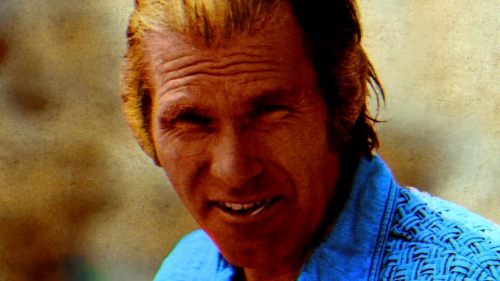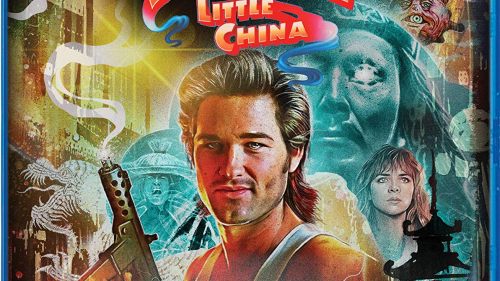Journey To Blood Island: Severin Films Presents Four Films By Eddie Romero
Eddie Romero had been working in the Filipino film industry for a decent stretch of time – mostly as a writer, penning comedies and comic book flicks – when he received a call from doctor-turned-actor Gerardo "Gerry" de León. De León had read one of Romero's early short stories and wanted to make a movie together, despite the author insisting they didn’t even speak the same language (but that’s what translators are for). The result was one of their country's first genre pictures: Terror Is A Man ('59), a cheapie spin on H.G. Wells' The Island of Doctor Moreau, that found a deadly panther man prowling the perimeter of a spooky land mass in the Pacific. Terror was released on a double-bill with another Romero-produced project (his Hong Kong shot mystery, The Scavengers ['59]) and unfortunately didn't do particularly well at the domestic box office, mostly receding into obscurity throughout the next decade.
Enter Samuel M. Sherman and Hemisphere Pictures (who mostly made their name on weirdo Al Adamson movies), which partnered with Independent International to distribute Terror Is A Man in the States in 1969 (under the title Blood Creature). Just like the movie's initial release, Sherman matched it with another one of Romero's works – the war mini-epic The Walls of Hell ('64) – in an attempt to make a quick buck off a dusty old horror curio that nobody else wanted to put out. In a true moment of "nobody knows nothing" cinema economics, Terror Is A Man became an American hit, making both Romero and Hemisphere hungry for more Filipino-crafted lo-fi exploitation.
Thus, the Blood Island Trilogy ('68 - '70) was born, gifting schlock fans a set of films that are rubbery, titillating (what with all those scenes of nude women racing through the forest) and increasingly gory. De León remained Romero's partner for the first two subsequent entries following Terror (Brides of Blood and Mad Doctor of Blood Island), while the tiny Filipino genre godfather brought the series home on his own with possibly one of the strangest creature features the world has ever seen...
*****

Terror Is A Man [1959] (d. Gerry de León, w. Paul Harber)
Shot in stark black and white, and resembling a Reuben riff on Erle Kenton's Island of Lost Souls ('32), there's a disarming level of shadowy menace on display in Romero and de León's debut exploitation collaboration (working off a script by Paul Harber, who previously penned The Kidnappers ['58] for Romero). De León is essentially crafting his own Universal Monsters installment, while simultaneously minting a formula that they'd end up following ten years on. Terror Is A Man is just as much a riff on James Whale's Frankenstein ('31) as anything else, making us experience genuine sympathy for the half-feline Beast-Man (Flory Carlos). This is a deeply tragic picture, as the monster is abused by its creator (Francis Lederer), who turns his back on the gorgeous wife (Greta Thyssen) who used to love him. In the end, she seeks comfort in the arms of a shipwrecked stranger (Richard Derr), while the creature kills islanders before battling the mad scientist with all its might, shrieking as it tries to reconcile the fact that it's no longer human, but rather something much more deadly.

Brides of Blood [1968] (d. Gerry de León & Eddie Romero, w. Cesar J. Amigo)
Ten years after Terror Is A Man, de León and Romero re-teamed to re-establish themselves as horror filmmakers, having toiled away in the Filipino studio system throughout the '60s (not to mention a stint working in America), which subsequently collapsed and led to more independent productions being churned out in their country. Brides of Blood plays like a movie out of time in certain regards, as a new set of adventurers – including Beach Blanket Bingo ('65) stud and future Jack Hill producer John Ashley – land upon the cursed shores of Blood Island, only to discover a jungle paradise infested with radiation-poisoned mutations, ranging from tentacled trees to a melting green creature that the villagers sacrifice their women to (echoing the atomic panic B-Movies of the late '50s). It's all rendered in stunning Technicolor, peppered with flashes of titillating nudity and unseen graphic violence. Brides of Blood is slightly overlong (at nearly 100 minutes) and jankily configured, yet still owns an alluring sense of cinema that seems like a natural evolution from de León and Romero's initial delve into schlock nonsense.

Mad Doctor of Blood Island [1969] (d. Gerry de León & Eddie Romero, w. Reuben Canoy)
The Blood Island "formula" is milked to its max potential with Mad Doctor of Blood Island, as de León and Romero deliver copious amounts of the derelict goods their audience desired: island intrigue, beautiful Filipino girls dashing naked through the jungle, zombie plant monsters, killer snakes, probable animal cruelty, and one pimp ass mad scientist (Ronald Remy). John Ashley returns, playing a different white hero and bedding another gorgeous blonde (Michael Findlay/Joe Sarno refugee Angelique Pettyjohn) before fighting his way through a dangerous isle, populated by bald swordsmen, secretive hula girls, and the chintziest monster the series has seen yet. All these lurid elements amalgamate into a premier piece of tropical drive-in heaven, complete with a gimmick (much like Terror Is A Man's surgery scene "warning bell") that implores the audience to drink the green blood of the beast. At this point, Romero knew exactly what types of movies he was making, and totally leaned into the huckster component of exploitation.

Beast of Blood [1970] (d. & w. Eddie Romero)
The first direct sequel that tries to establish any sort of continuity between the Blood Island entries, Beast of Blood picks up right where Mad Doctor of Blood Island left off: with a stowaway, chlorophyll-fueled creature attacking and destroying John Ashley's boat before staggering back to its home/prison. Following a quick recuperation, Ashley leads a search party into the jungle to try and track the monster down, only to discover the true origin of its existence inside the lab of Dr. Lorca (Eddie Garcia, donning an eye-patch as he replaces Ronald Remy). Unfortunately, Romero's first solo trip behind the camera in the series was also the point when the formula (which Beast of Blood barely adheres to) ran completely out of gas. There are some inspired moments involving the eponymous mutation (such as its headless climactic revenge), but the Blood Island series comes to a somewhat forgettable, yet no less ridiculous, close. Filipino exploitation would thrive throughout the next decade (as both Ashley and Romero would partner with Roger Corman to produce some admirable sleaze), yet nothing that came after could ever own the same homegrown textures as these cheeky adventure tales.
The Blood Island Collection is available now on Blu-ray.



